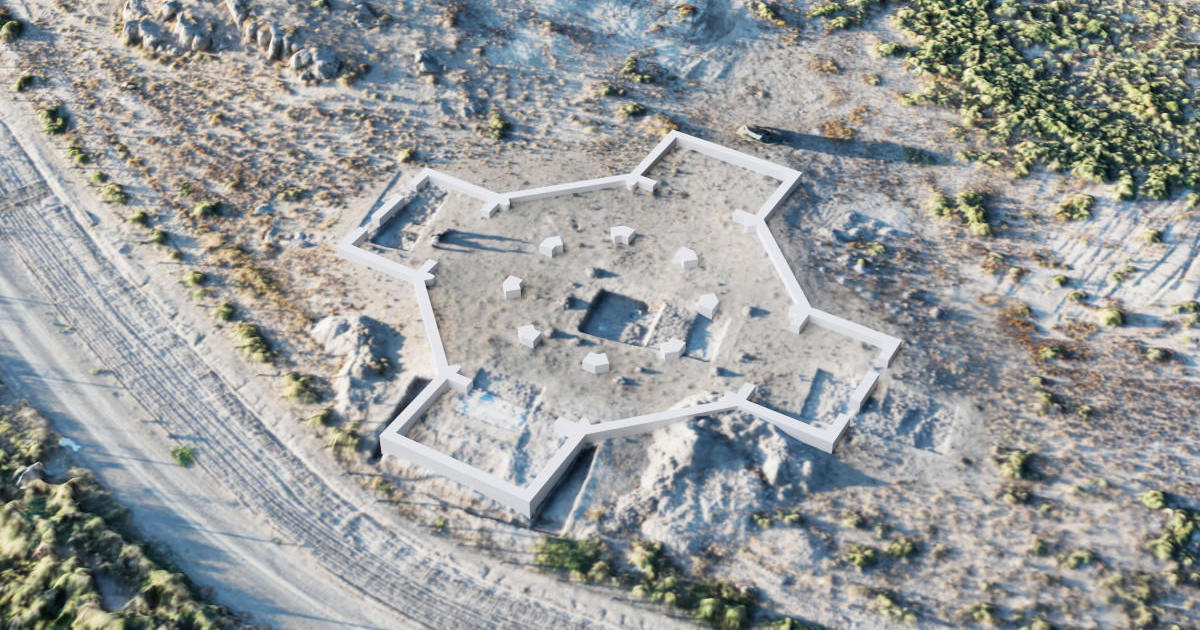The discovery of a nearly 2,000-year-old church in Artaxata, Armenia, represents a significant finding in the study of early Christianity. This exceptionally well-preserved structure, unearthed through a collaborative effort between the University of Münster and the Armenian Academy of Sciences, pushes back the timeline of known Armenian church architecture and provides valuable insights into the spread and development of Christianity in the region. The meticulous excavation and subsequent analysis have yielded compelling evidence, revealing details about the building’s construction, decoration, and potential historical significance. This discovery promises to reshape our understanding of early Christian architecture and Armenian history.
The Significance of the Artaxata Church Discovery
A Landmark in Armenian History
The discovery of this 4th-century church in Artaxata is monumental. It predates many previously known Armenian churches, making it the oldest archaeologically documented church in the country. This finding directly challenges existing historical narratives and prompts a re-evaluation of the timeline of Christianization in Armenia. The church’s age places it firmly within a pivotal period for the region, when Armenia adopted Christianity as its state religion, underlining its role in the early spread of the faith across the Eastern Mediterranean. Furthermore, its presence in the former capital, Artaxata, a significant commercial and political center, emphasizes the religion’s early integration into the daily lives of its populace. The implications of this find extend beyond Armenia; the unique features of the architecture provide important insights into the evolution of early Christian structures across a wider geographical area. The collaboration itself highlights the value of international cooperation in historical research.
Architectural Uniqueness and Eastern Mediterranean Influences
The octagonal shape of the church is a striking feature, markedly different from the typical architectural designs seen in other contemporary Armenian churches. This distinctive design has parallels in other early Christian buildings found across the Eastern Mediterranean. The discovery suggests significant cultural exchange and architectural influences across vast distances during this historical period, hinting at the interconnectedness of early Christian communities. The use of imported terracotta from regions such as Greece and Italy further underlines the global reach and the widespread interactions characterizing early Christian culture and commerce. Analysis of the building materials has been critical in verifying the age and geographical origin of components, creating a precise record of the architectural choices made and resources employed during the construction. The unusual architectural features of this church promise new insights into the interaction between various cultures and religions during the late Roman and early medieval periods.
Archaeological Methods and Discoveries
Excavation and Material Analysis
The excavation process at Artaxata employed rigorous methodologies to ensure the careful preservation and analysis of artifacts. The careful uncovering and documentation of the structure involved painstaking work to identify and preserve fragile elements. Researchers used advanced techniques to understand the building’s original layout, design, and construction materials. Analyzing these materials allowed the researchers to confirm that the terracotta components, likely imported from the Mediterranean, added a distinct style and grandeur to the interior of the building. The use of carbon dating, along with other proven analytical processes, on the remnants of wooden platforms helped verify the age of the structure and confirm the findings based on architectural and stylistic analysis. The high quality of materials and construction also speaks of the significance attributed to the building and those who built it.
Interpreting the Findings
The discovery at Artaxata is not just about the building itself. It offers a window into the social and cultural dynamics of early Christian Armenia. The sophisticated design and use of imported materials suggest a certain level of wealth and societal organization. This provides important clues about the nature of the early Christian community in Artaxata, shedding light on their economic status and their interconnectedness with other communities across the Mediterranean. It challenges existing preconceptions of the socio-economic status and power dynamics within Armenian communities during this historical period, highlighting its cultural connections with larger networks beyond its geographical region.
Implications for the Future
Further Research and Potential Discoveries
The Artaxata discovery has created numerous questions that require further research. Further archaeological work at the site promises more information. Detailed analysis of the building’s decorative elements will likely offer more clues about the religious and cultural practices of early Christian communities in Armenia. Researchers will delve into the architectural comparisons with structures across a wider radius to confirm cultural ties and artistic influences during that epoch. Detailed research is needed to further understand the community’s practices and beliefs. These further steps of analysis should clarify existing uncertainties.
Preservation and Public Access
Preserving the church site and artifacts unearthed from it will ensure this historical legacy remains for future generations. This will involve conservation measures to safeguard this monumental legacy for the coming years. Consideration also must be given to public accessibility to this landmark, balancing preservation and outreach. Preserving this landmark ensures accessibility to broader audiences and educational platforms. A well-developed exhibition, or accessible records, can encourage broader audiences to engage with the unique context and rich implications of this ancient structure.
Takeaway Points:
- The discovery of a 4th-century church in Artaxata, Armenia, is the oldest archaeologically documented church in the country.
- The church’s octagonal design and use of imported materials highlight its architectural uniqueness and suggest connections with the Eastern Mediterranean.
- This discovery necessitates a reassessment of existing narratives regarding early Christianity in Armenia and broader patterns of religious development.
- Further research, preservation efforts, and public access initiatives are essential to ensure that the significance of this discovery is understood and appreciated by future generations.




